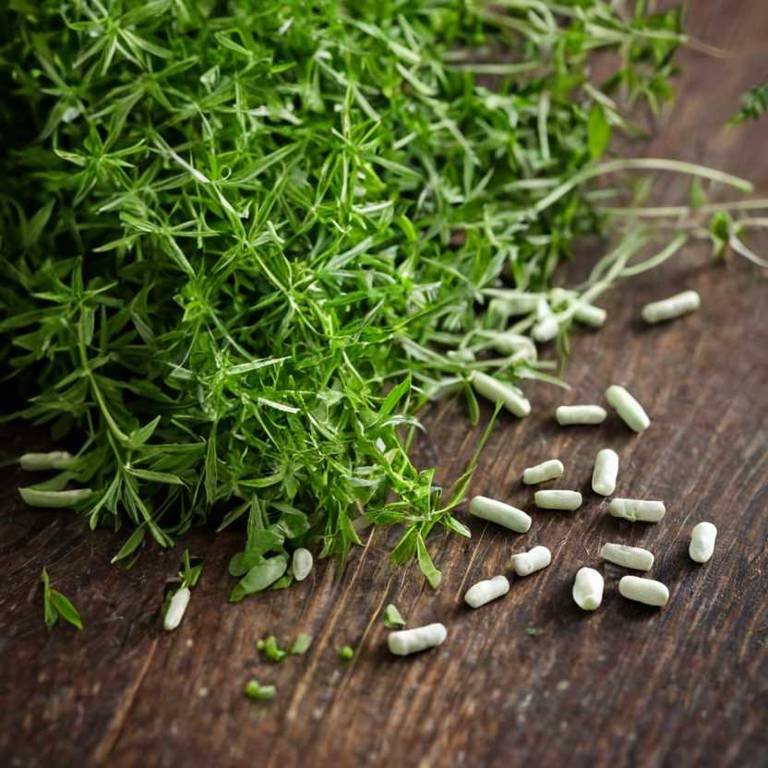10 Best Galium Aparine Preparations

The best medicinal preparations of Galium aparine are teas, decoctions, mucillages, tinctures, and oils, each offering unique therapeutic benefits.
Teas made from the dried leaves and stems are commonly used to support digestive health and reduce inflammation.
Decoctions, which involve simmering the herb, are effective for extracting its more potent compounds.
Mucillages, derived from the plant's tissues, are valued for their soothing and healing properties, especially for the respiratory and digestive tracts.
Tinctures and oils provide concentrated forms of the herb's active constituents, suitable for targeted treatments and topical applications.
Below there's a list of the 10 best herbal preparations of galium aparine for medicinal purposes.
1. Teas
Galium aparine teas is commonly used to support digestive health, alleviate skin irritations, and reduce inflammation.
This herbal preparation is traditionally used to treat ailments such as indigestion, constipation, eczema, and urinary tract infections. The bioactive constituents responsible for its medicinal properties include flavonoids, tannins, and iridoid glycosides, which possess anti-inflammatory, astringent, and antimicrobial effects. Additionally, the plant contains mucilage that soothes mucous membranes and aids in digestion.
These compounds work synergistically to provide the therapeutic benefits associated with Galium aparine teas.

2. Decoctions
Galium aparine decoctions is commonly used to treat digestive issues, skin conditions, and urinary tract infections.
This herbal preparation is traditionally employed for its anti-inflammatory, diuretic, and mild laxative properties. It is often used to alleviate symptoms of indigestion, constipation, and eczema. The bioactive constituents responsible for its medicinal effects include flavonoids, tannins, and iridoid glycosides.
These compounds contribute to its ability to reduce inflammation, support kidney function, and soothe gastrointestinal discomfort.

3. Mucillages
Galium aparine mucillages is commonly used to soothe digestive issues, skin irritations, and respiratory conditions.
This herbal preparation is often applied topically to treat wounds, eczema, and insect bites due to its anti-inflammatory and healing properties. It is also used internally to alleviate symptoms of gastritis, ulcers, and mild respiratory infections. The bioactive constituents responsible for these effects include polysaccharides, flavonoids, tannins, and mucilage compounds that exhibit antimicrobial, antioxidant, and demulcent actions.
These properties make Galium aparine mucillages a valuable remedy in traditional and complementary medicine.

4. Tinctures
Galium aparine tinctures is commonly used to treat ailments such as skin irritations, digestive issues, and respiratory conditions.
These tinctures are often employed for their anti-inflammatory, antispasmodic, and mild diuretic properties. The most common medicinal uses include alleviating symptoms of eczema, reducing inflammation in the respiratory tract, and supporting digestive health. The bioactive constituents responsible for these effects include compounds such as tannins, flavonoids, and iridoids, which contribute to its healing and anti-inflammatory actions.
Additionally, the presence of mucilage helps soothe irritated tissues, enhancing its therapeutic value.

5. Oils
Galium aparine oils is commonly used to treat skin conditions, digestive issues, and respiratory ailments.
This herbal preparation is often applied topically for its soothing and anti-inflammatory effects on the skin, and internally for its digestive and expectorant properties. The most common medicinal uses include treating eczema, psoriasis, constipation, and coughs. The bioactive constituents responsible for its medicinal properties include essential oils, flavonoids, tannins, and saponins, which contribute to its antimicrobial, astringent, and anti-inflammatory effects.
These compounds work synergistically to support the body's natural healing processes.

6. Poultices
Galium aparine poultices is commonly used to treat skin conditions such as wounds, rashes, and insect bites due to their anti-inflammatory and astringent properties.
The poultices are often applied externally to reduce swelling, promote healing, and soothe irritated skin. They are also used for minor burns and to alleviate symptoms of eczema and dermatitis. The most common medicinal uses include treating abrasions, reducing inflammation, and providing relief from skin irritations.
The bioactive constituents responsible for these effects include tannins, flavonoids, and saponins, which have antimicrobial, antiseptic, and healing properties.

7. Creams
Galium aparine creams is commonly used to treat skin irritations, inflammation, and minor wounds.
These creams are often applied topically to alleviate symptoms of eczema, psoriasis, and other dermatological conditions. The medicinal properties of Galium aparine are attributed to its bioactive constituents, including flavonoids, tannins, and mucilage. These compounds possess anti-inflammatory, astringent, and soothing effects that help reduce redness and promote skin healing.
Additionally, the plant’s ability to stimulate tissue regeneration makes it a valuable ingredient in natural skincare formulations.

8. Capsules
Galium aparine capsules is commonly used to support digestive health, alleviate inflammation, and promote urinary tract wellness.
They are often employed to treat ailments such as indigestion, urinary tract infections, and skin irritations. The bioactive constituents responsible for these effects include flavonoids, tannins, and iridoids, which possess anti-inflammatory, astringent, and antimicrobial properties. Additionally, the plant contains mucilage that aids in soothing mucous membranes.
These compounds work synergistically to provide the herbal preparation's therapeutic benefits.

9. Baths
Galium aparine baths is commonly used to relieve skin irritations, inflammation, and itching.
This herbal preparation is often applied for conditions such as eczema, psoriasis, and insect bites due to its soothing and anti-inflammatory effects. The most common medicinal uses include treating dermatological issues, reducing swelling, and promoting skin healing. Bioactive constituents such as flavonoids, tannins, and saponins contribute to its therapeutic properties by exhibiting antimicrobial, astringent, and anti-inflammatory actions.
These compounds help in reducing redness, preventing infections, and supporting the skin's natural recovery process.
